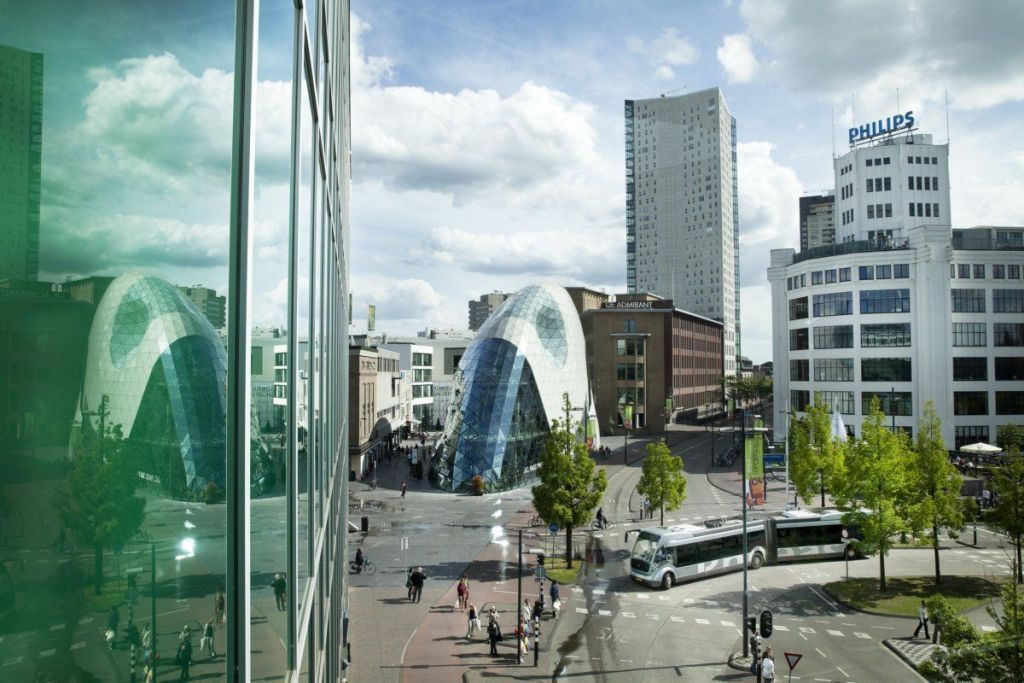
Will robots take over our work? Nonsense, says Ronald Dekker, who works as a labor economist at the Netherlands Organisation for Applied Scientific Research (TNO). In the long term, technology could actually ensure more jobs, better working conditions and a more inclusive labor market.
‘Help, the robot is coming and will soon be taking over my place.’ A lot of people experience new technological developments as a threat. Where does that fear come from?
“That fear is relatable,” Dekker explains. “It applies to all technological developments that come to us on the work floor. It has always been the case ever since the invention of the loom in the era of the Industrial Revolution. Even then, people were afraid that this development would cost them their jobs. It is no different now, with AI and robotization. However, research has shown that this fear is not justified.”
“In the short term, such technologies may cause the disappearance of not so many jobs, but rather a number of tasks. But what we are seeing with all forms of automation, from those looms, to the advent of computers in the 1980s, to current developments with robots and AI, is that more jobs are ultimately created as a result of these innovative technologies. The point is: Rolling out new technology often also has some unintended knock-on effects for work in an organization.”
Such as?
“Take the example of a pizza deliverer. Their job is bound to change with the introduction of electric bikes instead of scooters. The work remains the same, it is just done in a different way. For the last option, however, you have to be 16 or over and have a license to ride a scooter. The switch to electric bikes also made it possible for delivery companies to cut costs.”
“Thanks to electric bikes, it became possible to employ boys and girls aged 14-15 – without a scooter license. That’s nice and cheap for the employer, but it also meant that very young people were allowed to do quite dangerous work. In fact, you are legally not allowed to let a 15-year-old do any work that poses a danger to them. And so you shouldn’t be able to send them out into the busy city traffic on an electric bike either! The Dutch Inspectorate SZW in cooperation with the Dutch Trade Union Confederation (FNV), has concsequently raised the issue and called on the government to prohibit this.”

“What we at TNO want to convey to companies is that they should think about why they want to use new technology. In the decision-making process it is important that, as a company, you understand what the change will entail. Then your staff do not have to worry about job losses either. Plus, you always have the option of not using the technology. Managers often think that they have to use technology because otherwise they might miss the boat.”
“If, as a manager, you are an early adopter of the introduction of a certain innovation technology and you do it successfully, you will be seen as a ‘visionary’ after the fact. But if that innovation fails, your company will – in the worst case scenario – go out of business. So it is important to realize that just because a technology is available, this does not mean that you have to go along with it.”
When would be the best time to use new technology though? Or when wouldn’t it be?
“A good example are web shops. These are advertising more and more often with: ‘ordered tonight, delivered tomorrow’. The use of AI is becoming increasingly important, dictated by the market and the promise of these types of web shops. However, this also leads to an enormous peak moment between 10 and 12 o’clock in the evening. At such times, it might be advisable to use a robot in the warehouses behind those web retailers.”
“Another example is that of vegetable-cutting companies that supply supermarket chains with pre-cut vegetables packaged in plastic bags. The work is done in clean rooms, where people pre-sort all kinds of vegetables for the cutting process. Eastern European migrant workers are currently often hired to do this work. In principle, this work could be done by a vegetable cutting robot. So, that technology is already there. Except that companies have decided not to use that technology yet. The reason: What if the machine fails? Then we still have to keep all those people on hand to take over the work. That was a very sound, business management reason for not opting for the technology. At least, not yet. This example also shows that just because something is technically possible, it does not necessarily mean that you have to adopt it.”

How smart are robots? Compared to humans?
“Robots can’t do much at all. In fact, they remain reassuringly stupid. Let’s go back to those vegetable cutting companies for a moment. In order to automate there, you need a robot that can tell different types of vegetables apart, and then apply the right cutting technique to them. Now a child of three can recognize those vegetables. But for robot to distinguish bell pepper, eggplant and green beans based on color, shape etc., well that’s quite a feat.”
“Processing unstructured information continues to be very difficult for a robot. Unlike human beings, who can make a decision in a split second and then act on it. For the time being, the use of robots is consequently very limited. It works fine in a factory with a shielded cage around it. However, more autonomous robots, where they have to move freely in an environment with people, is a lot more complicated. Compare it to the self-driving car: the promise has been there for some time, and small steps are being taken. But the technological challenges are huge, so it keeps being put on the back burner.”
Which sectors does robotization offer a solution for?
“Sectors where robotization can be a very good addition are, for example, construction, industry and logistics. Like plasterers and people involved in aircraft maintenance. Where workers have to do a lot of work above their heads: heavy, repetitive and physically demanding work with a high risk of illness and disability. In such cases, an exoskeleton can provide additional support for back and arms, for instance.”
What can good technology mean for a sustainable and inclusive labor market?
“For people with disabilities, new technology can also be a helpful addition. Such as exoskeletons in the case of a physical disability. Yet also in the form of instructions on a screen for people who have a mental disability. These tell them what to do when they are carrying out technical tasks, like how to put things together.”
“Unfortunately, these kinds of innovations are still usually too expensive. In any event, few employers are willing to invest in inclusive employment practices within the framework of the Dutch Jobs Act for people with a work-limiting disability. That concerns only a small percentage of companies, mainly family businesses. Apart from the government, of course, due to their exemplary role in society, they also have to lead the way. While a listed company might be more inclined to say: ‘Just open a new can of Poles for me.'”
What do all the technological developments mean for the labor market of the future?
“Which jobs will and will not be preserved? That’s hard to predict. My job as a researcher will not be taken over by a robot any time soon. Nor that of my brother’s, who is a warehouse worker at a small specialist warehouse. At least, not for the time being. In contrast to large warehouses where there is more room for investment and where it is far easier to achieve efficiency gains. Therefore, robots will be used more quickly there.”
As an organization, how can you avoid being outpaced by reality?
“Keep thinking carefully about the adoption of new technology. And involve your staff in it. HR people often experience such a decision as something from above that is thrown over the fence from the board room and which they then have to execute. Research shows that involving employees in the process is much more effective in the long run. Also to make it clear that this technology is not principally intended to replace people. In most cases, it is not about replacing people but about having these robots stand alongside you: In other words, the robot as a colleague. As I constantly try to tell my more technically-oriented colleagues within TNO as well as my advice to companies: There is no technological innovation without social innovation!”







